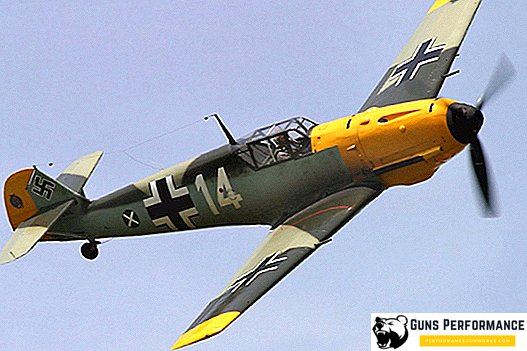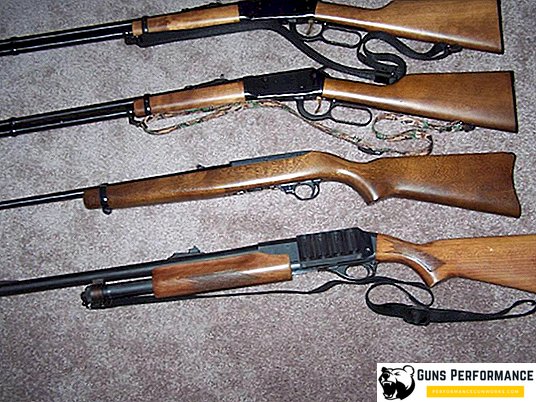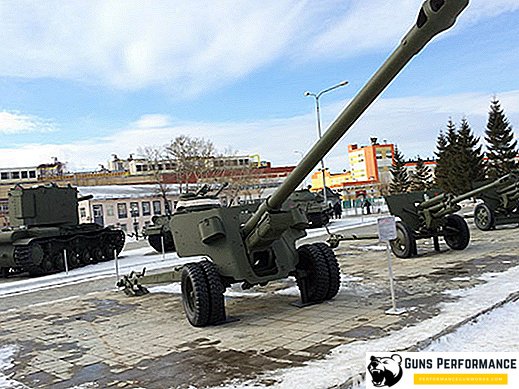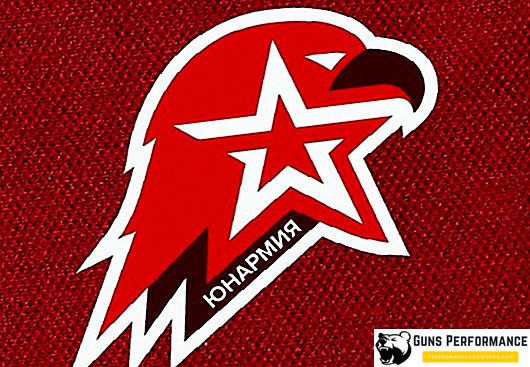
The Tu-144 is a supersonic passenger aircraft created in the USSR at the end of the 60s. It was launched in the series and for some time used for the commercial transport of passengers. In the USSR, very high hopes were pinned on the Tu-144 - this car was supposed to connect the regions of a huge country, and later go on international routes. However, this did not happen.
The Tu-144 is undoubtedly a legendary and unique car. This is the first passenger aircraft in the world at supersonic speeds. At the same time, another supersonic jet passenger aircraft was created - the legendary Anglo-French "Concorde". In fact, the development of these two aircraft was another Cold War era competition. The Soviet designers did not yield to their Western counterparts, but the project of the Soviet supersonic aircraft lost to Concorde economically.
Flights on supersonic aircraft were very expensive, and in the USSR, as we know, there were no rich people. Tickets paid off only a small part of the cost of fuel and maintenance of these aircraft. The western passenger was willing to pay for comfort and speed, which is why the Concord became a successful commercial project, and the Tu-144 soon fell into oblivion. For comparison, two figures can be cited: for the entire period of operation, the Tupolev aircraft carried 3,284 passengers, and the Concord - more than 2.5 million.
As a passenger liner, the Tu-144 was used for less than a year, later the aircraft were used for other purposes, they were tested or transported urgent cargo over long distances. A total of sixteen aircraft were released (the Concordes made twenty), the last flight of the Tu-144 took place in 1999.
Tu-144 set 13 world records.

History of creation
The 50s and 60s of the last century became the epoch of the rapid development of jet aircraft. In 1947, the American experimental aircraft Bell X-1 was able to break the sound barrier. In the mid-50s, the USSR and the USA began to create serial fighters with supersonic speeds.
In the mid-60s, the technology of creating such machines had already been run in and the designers seriously thought about creating passenger aircraft with supersonic speeds. Then it was really the dictates of time. In addition, the use of such machines promised airlines significant advantages: reduced flight time, eliminating the need to make intermediate landings to refuel the aircraft.
Create a supersonic passenger liner was a very difficult technical task. The Americans, after weighing all the pros and cons, abandoned this idea, declaring it inappropriate. In Europe, the development of such a passenger aircraft engaged the British (project Bristol 223) and the French (project Super-Caravelle). In 1962, they decided to join forces, a joint project of a supersonic airliner was called "Concord" ("Consent"). They were interested in a similar aircraft in the Soviet Union, especially since the Europeans did not make secrets from their designs - models of future aircraft were exhibited at international aerospace stores.

In the USSR, the creation of a passenger supersonic airliner was entrusted to the Tupolev design bureau, whose specialists had the richest experience in building jet passenger aircraft. In addition, it was Tupolev who created the Tu-22 bomber, which had a supersonic speed.
In 1963, a resolution of the Council of Ministers appeared, which prescribed the creation of a passenger liner with a range of 4000–4500 km, a cruising speed of 2300-2700 km / h and a passenger capacity of 80-100 people.
Work on the new aircraft began in 1964. The following year, the model of the car was shown at the exhibition in Le Bourget. When asked when his creation would rise into the air, Andrei Tupolev usually answered: “Two months earlier,” Concord. ”In the end, it happened.
While working on the aircraft, designers had to face many difficulties: unusual aerodynamics of the machine, heating of the hull at high speeds and its deformation. They had to create new materials and life support systems for the crew and passengers. Especially a lot of time was spent on developing a suitable wing design - about two hundred variants were tested in a wind tunnel.
The current model in the development of the Tu-144 was the MiG-21 fighter. However, its design was slightly changed: the horizontal tail was removed, the length of the fuselage was reduced, and the wingspan was increased. In 1967, the model aircraft was able to reach speeds of 2500 km / h.
The Tu-144 first flew on December 31, 1968, this happened two months before the flight of the Concord. The following year, the aircraft was able to reach the speed of sound, and in the summer of 1970 it was twice as high as it was.

The appearance of a supersonic passenger liner in the USSR became a real world sensation. In 1971, the Tu-144 made several test flights between Moscow, Sofia, Berlin and Paris. During this period, began the experimental operation of this aircraft in the "Aeroflot".
Mass production of the machine was established at the Voronezh aircraft building plant.
Description of construction
The Tu-144 is a low-wing all-metal monoplane manufactured in a tailless pattern. The fuselage is semi-monocoque, with a skin resting on stringers and frames. Chassis tricycle, there is a nose strut.

The structure of the power plant included four engines TRD NK-144A or RD-36-51A, which had a pair-wise arrangement. Each engine had its own air intake. Engine nozzles protruded over the edge of the wing.
The fuselage of the aircraft was conventionally divided into three parts: the nose, center and tail. The crew cabin was located in the bow, its lantern was inscribed in the fuselage lines and a nose fairing that could be raised and lowered. In the central part of the liner were located the passenger compartments, which together with the nose part formed a single whole. In the tail of the Tu-144 was located a fuel tank-caisson, and in its ending was a container for a brake parachute.
The wing of the aircraft had a variable angle of sweep, it is 76 ° in the root part and 57 ° at its ends. The wing skin is made of special aluminum alloy plates. On the rear edge of the wing are elevons made of titanium alloy.
The cockpit of the aircraft to improve visibility during takeoff and landing was made descending. The cab was raised and lowered using a hydraulic drive.
The fuel was located in 18 fuel tanks located in the wings of the liner. Also, the Tu-144 had a special balancing tank installed in the rear of the fuselage. He took the fuel during the transition of the aircraft from subsonic flight to supersonic.
The Tu-144 was controlled by an onboard computer, and the approach was made automatically in any weather and at any time of the day. Automation also monitored the condition and operation of all onboard systems, which was a novelty for the Soviet aircraft industry.
The landing gear consisted of a two-wheel-pillar and two main struts with four dual bogies.
An interesting feature of the Tu-144 was the front retractable horizontal tail (GIP), which was located in front of the fuselage, just behind the cockpit. PGO created additional lift and increased the maneuverability of the aircraft. Also, with the help of horizontal tail assembly, it was possible to reduce the speed during landing more quickly, which allowed the Tu-144 to use shorter runways.
The crew of the Tu-144 consisted of three people. Passenger capacity ranged from 98 to 150 people, depending on the modification of the liner.

Liner operation
One of the most important (and most tragic) days in the history of the Tu-144 was June 3, 1973. On this day, the first Tu-144 crashed at Le Bourget during a demonstration flight. The tragedy happened in front of 350 thousand spectators.
The disaster occurred near the French town of Hussenvil. Five crew members, seven local residents were killed, nearly thirty people were injured.
The Soviet airliner tried to demonstrate a maneuver that the Concorde had performed the day before - to fly over the runway and then gain altitude again. However, it was not possible to do this: the plane began to swoop sharply, and at a height of 120 meters it began to fall apart. First one wing fell off, then the tail section. Then the design of the liner collapsed completely.
The causes of the disaster have not been fully clarified to this day. There is a version that the crew was forced to make a sharp maneuver to avoid a collision with the Mirage fighter, who photographed the Tu-144 in flight.
According to another hypothesis, during the maneuver of the aircraft, the control system failed. Many years later, one of the leaders of the Tupolev Design Bureau in an interview with journalists admitted that there were some still untested units on the plane.
There is also a version that during the maneuver of one of the crew members, the movie camera fell out of the hands, blocking the steering column, but this is not confirmed by the flight recorders.
The official report states that a catastrophe could have caused a man to fall in the cabin of the ship, but it is emphasized that no material evidence of this was ever found.
As a result, the causes of the disaster were identified as unidentified, the pilots were buried in the Novodevichy cemetery.
Despite the crash of 1973, the Tu-144 was shown at the Le Bourget Air Show in 1975 and 1977.
During the visit of Secretary General Brezhnev to France in 1977, he was shown a "Concord", which by that time operated international and intercontinental flights (Rio de Janeiro and Bahrain). After arriving home, Brezhnev ordered the commercial launch of the Tu-144 in the USSR.
Earlier, work began on increasing the range of the liner. On the Tu-144 were installed new, more economical engines RD-36-51A. Modification of the aircraft received the name of the Tu-144D. On December 26, 1975, the liner performed the first flight Moscow - Alma-Ata, carrying mail. At the end of 1977 passenger traffic began.
For piloting the liner, the most experienced pilots were selected; they had previously qualified for special training. And on the Tu-144 took the most beautiful flight attendants work.
Two airplanes flew along the route Moscow - Alma-Ata, the NK-144A engines were installed on them, allowing the Tu-144 to fly no more than 3 thousand km. The cost of a ticket for the Tu-144 was 80 rubles, while the price of a ticket for a regular plane was 62 rubles.
The reserve of fuel was barely enough to the point of destination, the pilots did not have reserves. If, for any reason, the aircraft was denied landing in Almaty (and for reserve GDP in Tashkent), there was nowhere to board the aircraft. Each flight of the Tu-144 turned into a real test for pilots and aviation authorities.

The Soviet leadership had serious plans for the Tu-144. Modification of the Tu-144D wanted to put on the route Moscow - Khabarovsk, and then bring it to international flights. However, this was not to be.
On May 23, 1978, the experimental Tu-144D crashed. Due to the destruction of the fuel line, a third engine ignited and the cabin smoked. The crew went on an emergency landing. As a result of this incident, two flight engineers were killed, they could not leave the plane after landing.
On July 31, 1980, another emergency situation occurred with the Tu-144D, which almost ended in tragedy. At supersonic speed, the destruction of one of the engines occurred. The crew managed to land the car, and the engines were sent for revision. During the tests, they again showed unsatisfactory performance. In addition, there was a change of power in the country - Brezhnev died, and the new government was skeptical about the project of the new aircraft. In the end, it was decided to continue to transport more simple and cheap subsonic aircraft, and the Tu-144 project was closed.
For some time, the liners used to deliver urgent cargo and test flights. The Tu-144 even trained pilots involved in the program of the first (and last) Soviet "shuttle" Buran.
The main reason for the termination of the Tu-144 project was not technical problems or even disasters, but its economic unprofitability. Even for the Soviet Union, where they did not like to count money, the operation of this airliner was too expensive and meaningless.
With old engines, its flight range was about 3 thousand km, which was very small for a high-speed supersonic aircraft. On long-haul routes, the liner had to land for refueling - this wiped out all its advantages. After all, the essence of the creation of such a machine was to make quick non-stop flights between remote settlements. For comparison: the range of the Concorde exceeded 6,400 km. And the RD-36-51A engine, which provided a range of up to 5,300 km, could not be brought to mind.

In addition, the cost of tickets for the Tu-144, even to a small extent, did not pay for the costs of flights and maintenance of the ship. The leadership of the country did not want to take more money from Soviet citizens (yes, they didn’t have them), so the airliner became just an expensive toy, another proof of the achievements of Soviet designers.
Tu-144 - research laboratory
In the mid-90s, the passenger liner took part in a research program that the Tupolev Design Bureau conducted together with the Americans. NASA has studied the possibility of creating a new generation supersonic airliner.
For research was used Tu-144LL aircraft, which was a heavily upgraded version of the Tu-144D. On it were installed new engines NK-32-1 instead of the RD-36-51A, long out of production.
Americans were interested in many issues related to flights at high speeds: the study of the temperature of the skin and liner design, the work of the power plant, the assessment of the stability and controllability of the aircraft in different flight modes, friction coefficients and much more. In addition, customers studied the features of the atmosphere at high altitudes, the degree of impact on the crew and passengers of space radiation, ways to protect the cabin and salons from the noise of on-board systems.
It is often said that the Soviet TU-144 is a clone or a copy of the Concord. It is not true. These machines are very different and structural, and even externally. The Tupolev machine is much more powerful, it has more take-off weight and is capable of taking on more passengers. Tu-144 has a number of interesting technical features (for example, PGO). This allowed the Soviet liner to use shorter runways.
However, at the same time, the Tu-144 lost to its competitor in the most important characteristic - in the flight range.

After the 2000 disaster, Concord was also decommissioned. The era of passenger supersonic aircraft suspended. However, we can confidently say that humanity will return to the idea of ultra-fast passenger flights, but this will happen at another turn of scientific and technological progress. Today, work in this direction is carried out in several countries around the world.
Specifications
| Modification | Tu-144 |
| Weight, kg | |
| empty aircraft | 91800 |
| normal takeoff | 150000 |
| maximum takeoff | 195000 |
| engine's type | 4 TRDF NK-144A |
| Max. speed, km / h | 2500 (M = 2.35) |
| Cruising speed, km / h | 2200 |
| Practical ceiling, m | 18000-20000 |
| Crew | 3 |
| Payload | 150 passengers or 15,000 kg of cargo |













